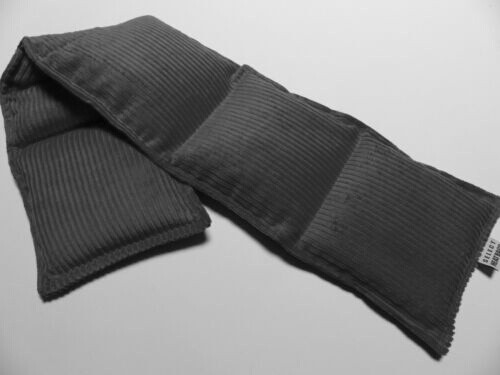Embrace the Warmth: The Ultimate Guide to Wheat Heat Packs for Parents
Welcome, dear parents, to your go-to resource for all things related to wheat heat packs! Whether you’re familiar with these cozy little treasures or just discovering their marvelous benefits, you’re in the right place. Wheat heat packs are not only simple and natural but also an effective way to provide comfort and relief to your family. So, let’s jump into the world of soothing warmth and uncover the safe, cuddly, and healing embrace of wheat packs together!
What Exactly Is a Wheat Heat Pack?
Curious about what makes these packs so special? Well, a wheat heat pack is a sealed fabric bag filled with grains of wheat that can be heated in the microwave or sometimes in the oven. Upon heating, they retain warmth and release it slowly, making them perfect for cuddling up on chilly nights or for targeting aches and pains. Moreover, such packs often come with lovely hints of lavender or chamomile to add a soothing aroma to the mix.
The Safe Embrace of Heat: How Wheat Packs Provide Comfort
These wonderful little wonders offer more than just warmth. They are incredibly versatile and can be used for:
- Providing soothing heat therapy to relieve muscle aches, stiffness, or cramps.
- Calming down before bedtime for a restful night’s sleep, especially with their gentle scents.
- Warming up beds for your little ones so they can slip into a pre-warmed, cozy bed.
Safety First: Tips for Using Heat Packs With Your Kids
When it comes to your children, safety is paramount! Here’s how to use wheat heat packs without worries:
- Test the Temperature: Always check the heat pack’s temperature before handing it to a child. It should be warm, not hot to the touch.
- Never Overheat: Follow the heating instructions meticulously to prevent overheating, which might cause burns or even fire hazards.
- Supervision is Key: Never leave a child unattended with a heat pack, and ensure they understand how to use it safely.
- Storage Matters: Store your wheat heat pack in a cool, dry place to prevent mold growth and extend its life.
Your DIY Corner: Creating a Homemade Wheat Heat Pack
Feeling crafty? Making your own wheat heat pack can be a fun family activity. Here’s a simplified process:
- Select natural fabric like cotton or flannel for your pack.
- Cut two fabric pieces to your desired size and shape.
- Sew around the edges, leaving one side open for wheat insertion.
- Fill the bag with wheat grains, not too full, to allow flexibility.
- Sew the open side shut, and voilà – your homemade heat pack is ready!
Throughout this comprehensive guide, we will delve deeper into the quintessential uses of wheat heat packs, explore the therapeutic benefits, and even share some delightful DIY patterns to customize your own packs. So stick around and get ready to add another layer of comfort and care to your parenting toolkit!
Join us as we continue to unwrap the cozy and comforting world of wheat heat packs. Up next, we’ll discuss how to properly care for your heat packs and how they can play a role in promoting wellness and relaxation for the whole family. Stay tuned to nurture a snug and serene environment at home!

Five Essential Tips for Parents Preparing Wheat Heat Packs
1. Choose the Right Wheat
When selecting wheat for your heat pack, opt for whole grain wheat, as it has the perfect consistency and moisture content for heat retention. Avoid using treated wheat, as it could contain chemicals that are not suitable for heating and skin contact.
2. Understand the Heating Instructions
Every microwave is different, and thus, it’s crucial to understand the correct heating time for your wheat pack. Start by heating it for the minimum suggested time and gradually increase as needed. Overheating can lead to a scorched pack, or worse, a fire hazard.
3. Add a Touch of Aromatherapy
Infuse your wheat pack with a few drops of essential oils to enhance the relaxing experience. Lavender or chamomile are popular choices that can aid in sleep and reduce anxiety. Make sure the oils are completely absorbed to avoid hot spots when heated.
4. Consider the Fabric
The outer fabric of your wheat pack should be comfortable against the skin and durable enough to withstand repeated heating. Natural fibers like cotton are ideal, as they allow the pack to breathe and prevent overheating. Also, consider using fun patterns or colors to appeal to your child’s interests.
5. Monitor for Wear and Tear
Regularly inspect your wheat heat pack for any signs of wear and tear. Damaged fabric or seams can lead to wheat leakage, which can cause messes and potential burns if the grains are hot. Replace the pack if you notice any damage, as safety is always the top priority.
Caring for Your Wheat Heat Pack
Maintain the longevity and quality of your wheat pack by following these care tips:
- Let the pack cool completely before storing it.
- Keep it dry and air it out regularly to prevent mold and mildew.
- Avoid getting the pack wet, as moisture can damage the wheat and create a breeding ground for bacteria.
Using Wheat Heat Packs for Wellness and Relaxation
Heat packs can be an integral part of your family’s wellness routine. Use them to soothe sore muscles after sports, to unwind after a long day, or as a warming element during colder seasons. The gentle heat can also soothe an upset tummy or help to ease growing pains.
Prioritizing the comfort and safety of your children while providing them with a soothing tool for relaxation is a parenting win. With these tips and tricks, wheat heat packs will surely become a cherished comfort item in your household.
Remember, the joy is in the small moments, and there’s nothing quite like the pure contentment of your child feeling comforted and calm with their favorite wheat heat pack. Happy heating!
See more great Things to Do with Kids in New Zealand here. For more information see here
Disclaimer
The articles available via our website provide general information only and we strongly urge readers to exercise caution and conduct their own thorough research and fact-checking. The information presented should not be taken as absolute truth, and, to the maximum extent permitted by law, we will not be held liable for any inaccuracies or errors in the content. It is essential for individuals to independently verify and validate the information before making any decisions or taking any actions based on the articles.




